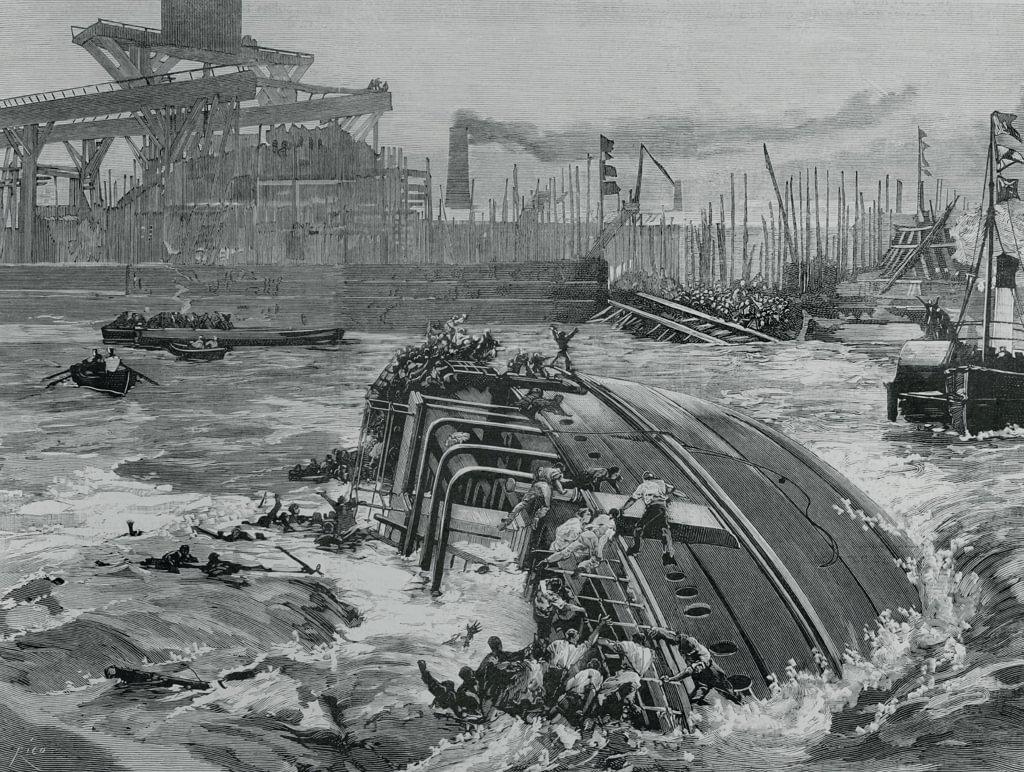
On Tuesday 3 July 1883, the small steamer Daphne capsized while being launched at the Clyde shipyard of Alexander Stephen & Sons at Linthouse. This resulted in the death of 124 men and boys, probably the worst shipbuilding accident in the world and one that has been retold to generations of shipyard workers on the Clyde. The news spread around the world, generating an outpouring of financial support for the bereaved from rich and poor alike. Decisions on distribution of the funds proved controversial, which would be remembered in the local community for many years.
Building
The Daphne was ordered by the Glasgow and Londonderry Steam Packet Co. on 30 October 1882 at a cost of £18,350. Intended for the passenger/cargo service between Glasgow and Portrush, the ship design followed a standard pattern and was based broadly on two similar vessels, Shamrock and Brier. The two earlier ships were of 710 gross registered tonnage (grt), while Daphne was to have a carrying capacity of 449 grt, almost 30 per cent less. Building progressed steadily, although, being on a slipway beyond crane access, the boilers could not be inserted before launch. To enable later access, several deck plates on the starboard side were omitted, being secured alongside the space that was left. There was a brief delay in obtaining material for masts but, by 3 July, Daphne, or Yard No 279 as she was known before naming, was ready to be launched.
As with most launches, it was to take place around the time of high water at 11.54, when potential influence by tidal currents was at a minimum. An hour before this, two supervisors, along with Robert McMaster, yard foremen, went round the ship, ensuring all openings in the hull were closed and secured. This included the tween deck cattle loading doors as well as various portholes, while a point was made of checking all loose material was removed or fastened. Then, as they left the ship, they brought off all the workers they considered had no reason to remain aboard. Unknown to them, at least one ‘stowaway’ had been missed, 21-year-old dentist William Telfer, who had been smuggled aboard by a friend as he wished to experience a launch. Later reports suggested at least two other such ‘stowaways’ were aboard as well, but there is no evidence to support this.
Disaster strikes
The launch of a ship, no matter its size, is a significant event and when possible will attract


